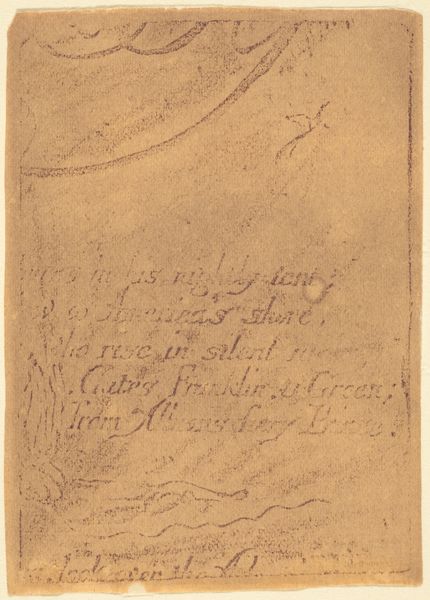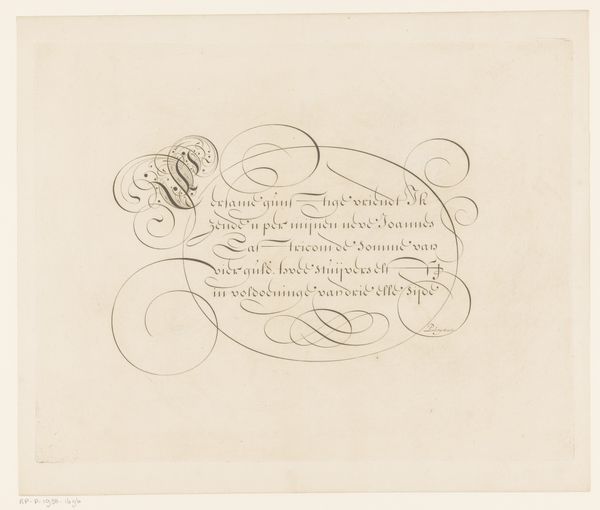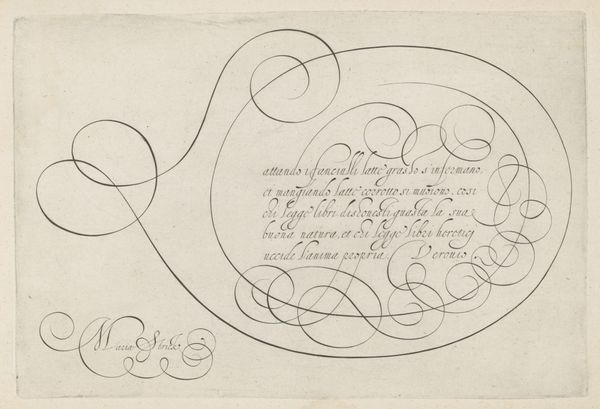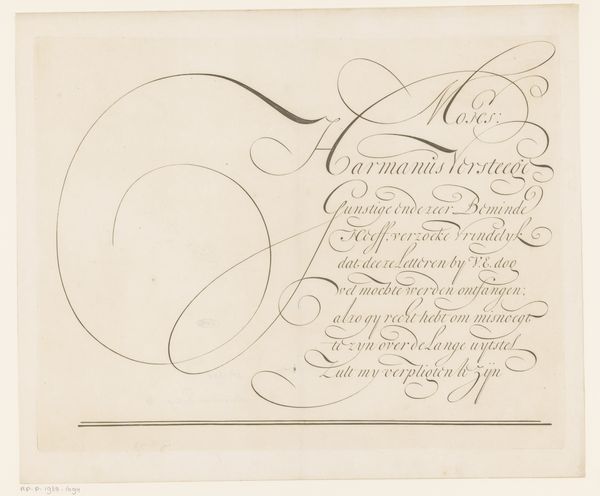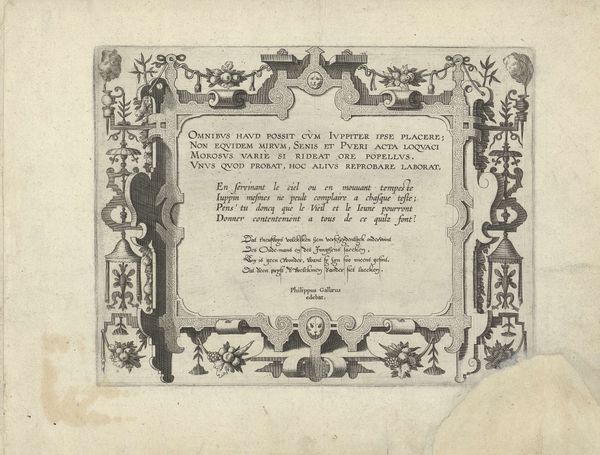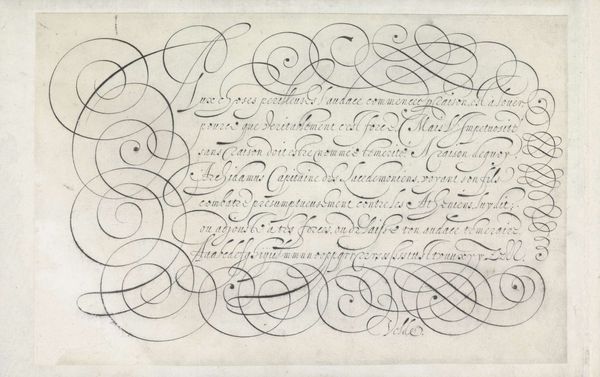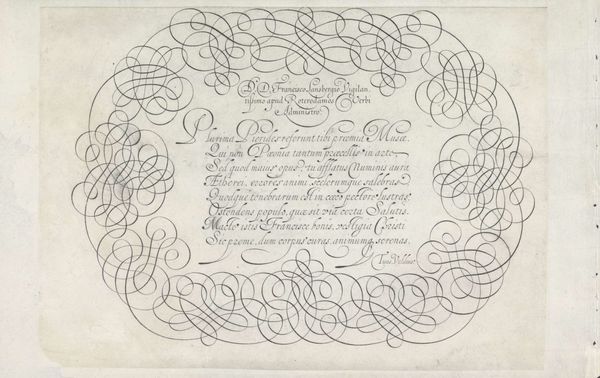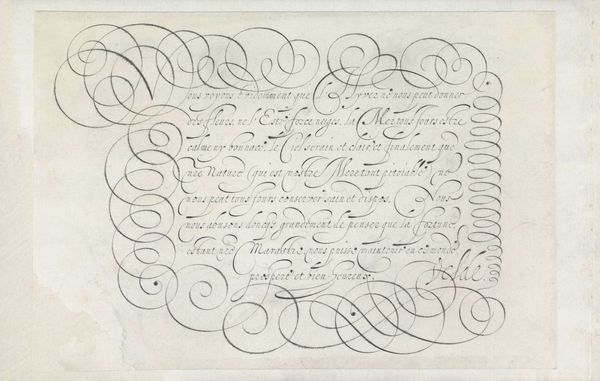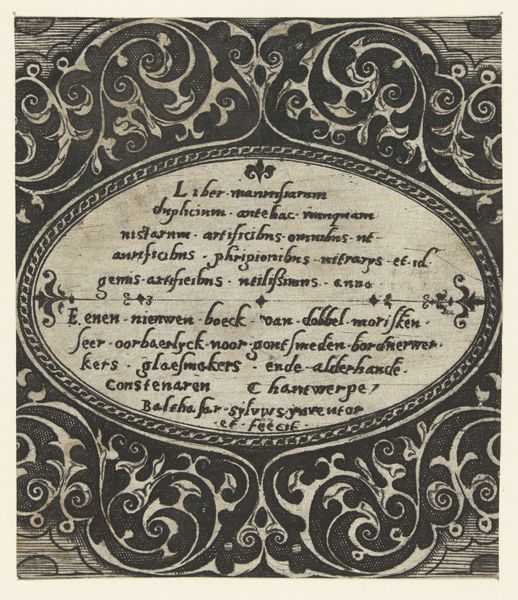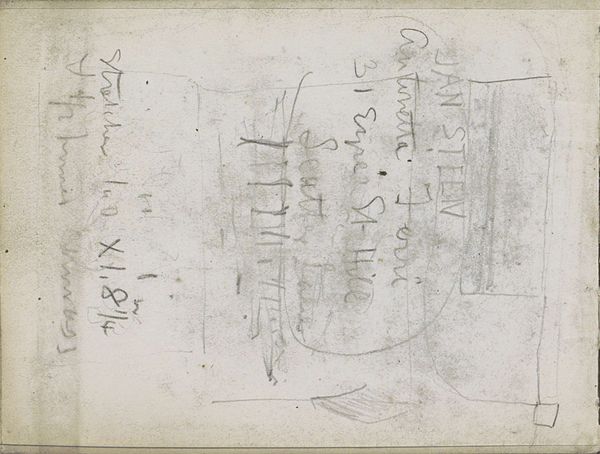
Restrike from fragment of cancelled plate for "A Prophecy" 1793
0:00
0:00
print, etching, typography, engraving
# print
#
etching
#
old engraving style
#
typography
#
romanticism
#
history-painting
#
engraving
Copyright: National Gallery of Art: CC0 1.0
Curator: The first thing that strikes me is the sheer starkness of the contrasting white lines against the dark background, it gives the piece a certain drama. Editor: We're looking at a restrike from a fragment of a cancelled plate by William Blake, dating back to 1793, titled "A Prophecy". It combines etching and engraving. Curator: That cancellation, the fact that we're seeing only a fragment, almost amplifies the power. The white lines feel brittle, on the verge of shattering across this void. The artist plays interestingly with positive and negative space, creating a depth of field that draws the eye. Editor: This piece reflects the political ferment surrounding the American and French Revolutions. Blake's "prophecies" were critiques of power structures and celebrated revolutionary zeal, as expressed here through symbolic imagery, Romanticism, and the naming of historical people such as Franklin and Green. Curator: You're right to point out its political aspect but also observe how Blake organizes this imagery with respect to the text, creating almost an allegorical balance: ethereal, celestial, almost geometric forms on top while human activity is depicted on the bottom of the panel. I would say its composition conveys the shift from spiritual vision toward materialization. Editor: Considering that it is only a fragment, it is difficult to say if it originally appeared like this. What intrigues me about this engraving are these silhouetted names and phrases emerging as ghostly pronouncements. The effect is both defiant and lamenting of what’s occurring within socio-political constructs. Curator: Exactly, it's a haunting artifact. I mean the use of "nightly tent" and the mention of these figures rising "in silent night". It evokes clandestine meetings, brewing revolutionary thoughts under the cloak of darkness. Its raw almost primal intensity creates a strong impact even in its fragmentary state. Editor: It serves as a potent reminder that even discarded fragments of history, viewed in a different context and medium, can ignite powerful visual dialogues between then and now. Curator: Ultimately, Blake forces us to look closely not just at what’s rendered on the plate, but what it signified at the time of its creation, and what significance it still has today. Editor: An assessment with which I entirely concur and which reminds us that history is not just dates, but always an interpretation and a construction.
Comments
No comments
Be the first to comment and join the conversation on the ultimate creative platform.
